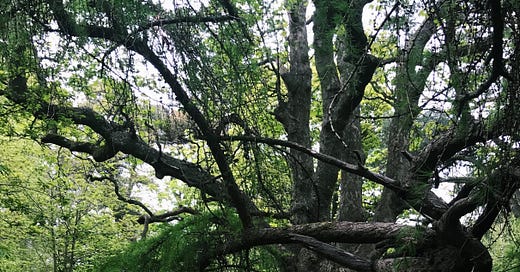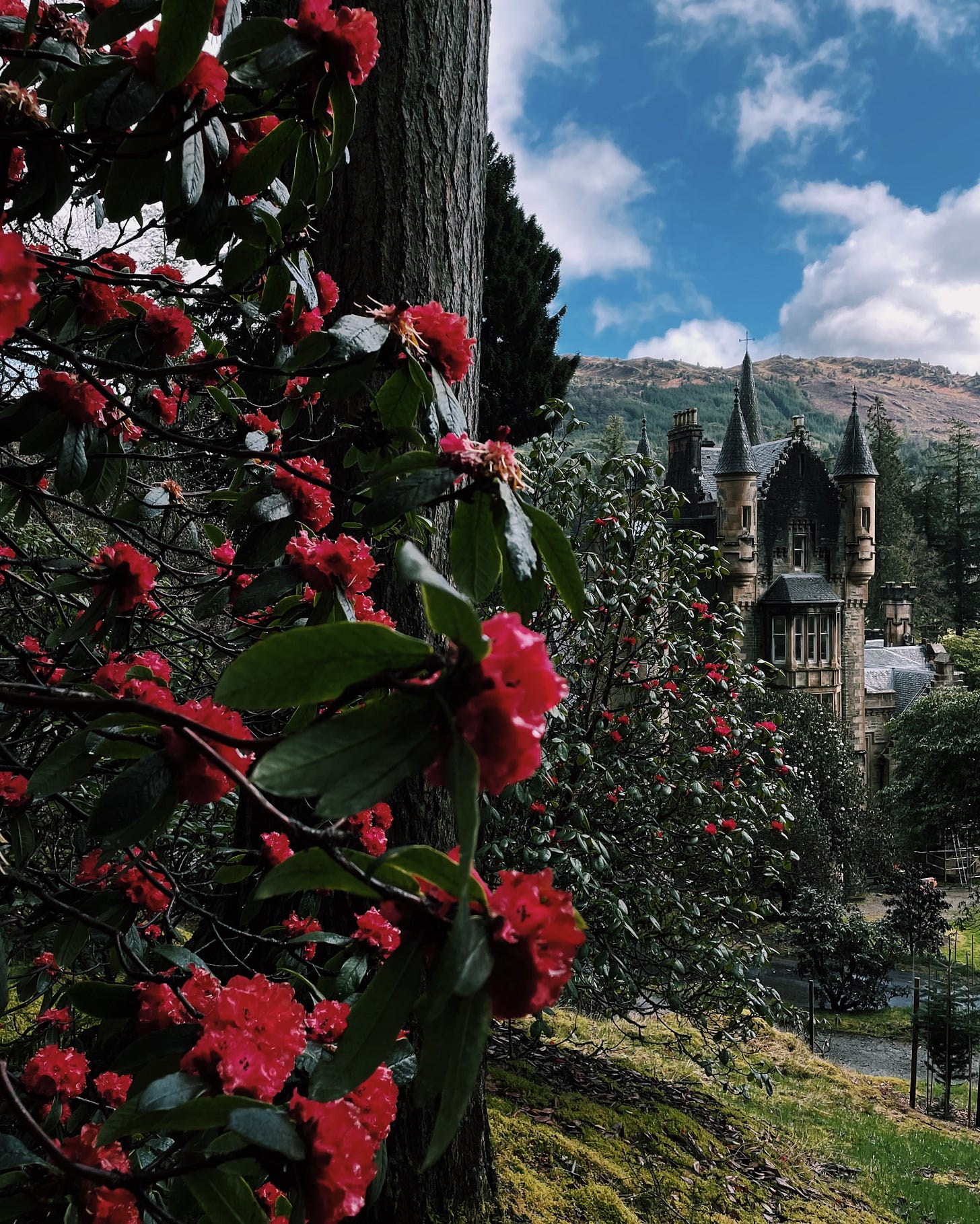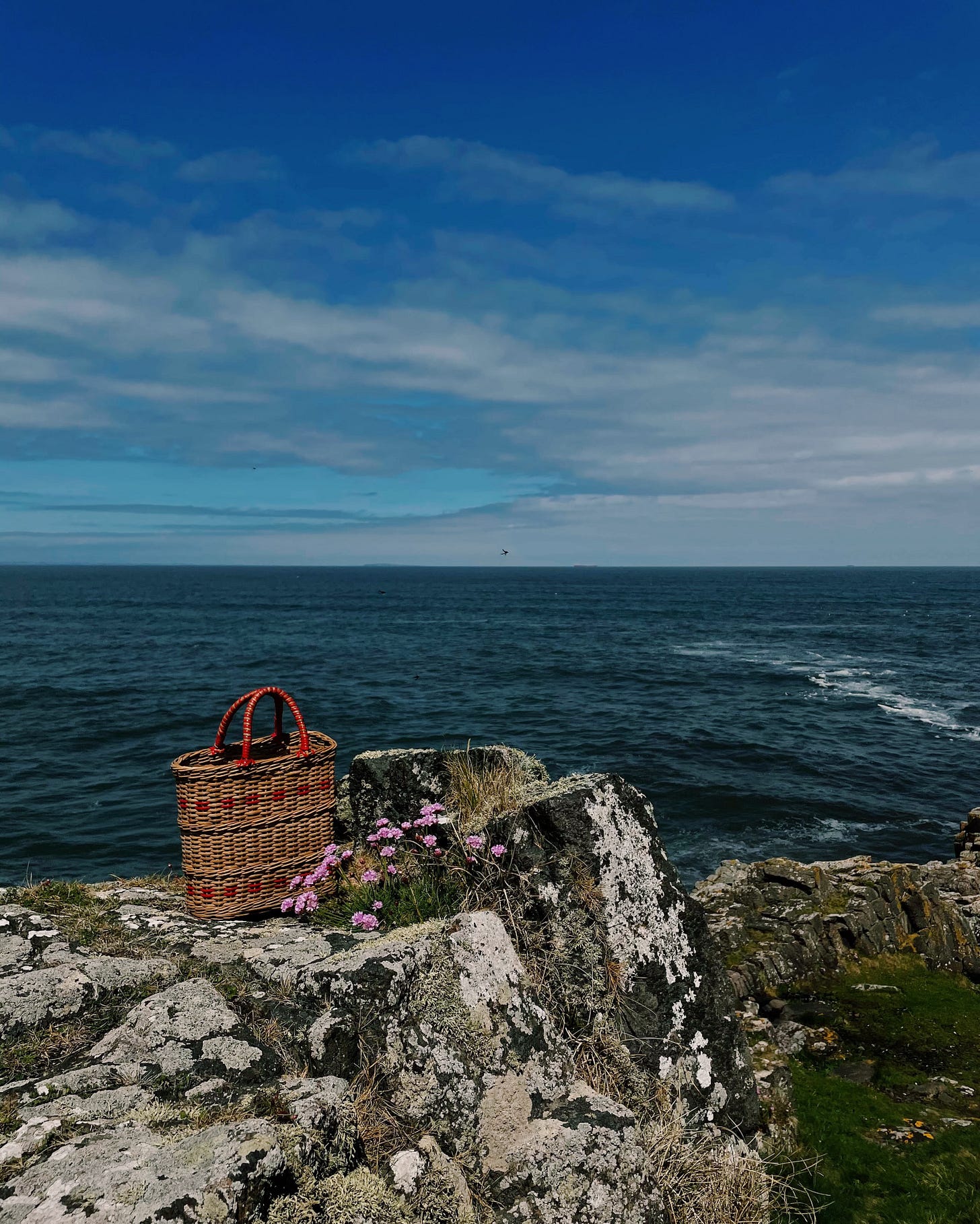Beltane Nature Notes to Notice
As the Earth tilts closer towards the sun and we near Beltane on Sunday, the natural world is coming alive. The first of May marks the halfway point between Ostara, the Spring Equinox, and Litha, the Summer Solstice, and nature is certainly reflecting this growing energy. Here are my nature notes to notice for Beltane.
Land
In Britain during Beltane the hedgerow is in full bloom, every tree seems to be bursting into blossom, and the forest floor is a carpet of wild garlic and wood sorrel and the distinctive purple or white of violets. Traditionally, the flowers of perfumed violet symbolise love, and they can be found in damp, dark patches such as hedgerows or beneath trees in the woods. The bluebells are just unfurling here in Edinburgh too – and I’ve got a whole newsletter planned, dedicated to this beautiful Spring bloom soon! The heavy dew at this time of year makes for some beautiful photographs of the forest floor; head out early with your camera to capture a moment in time.
Warm evenings are the time to observe wildlife in late Spring. This is the time of year when beetles emerge, including the wasp beetle and cardinal beetle that stand out with their warning colours. What’s more, common lizards live in grassland, hedgerows and sand dunes and April and May is their mating season.
At dusk, badger cubs peep out from their setts with their parents, and you might even spot baby hares in open fields. The hedgehog emerges from its hibernation at this time, searching for food to re-nourish before breeding season, producing several young hoglets from early Summer into Autumn.
Sky
In the South, the haunting song of the nightingale can be heard at this time of year, synonymous with early Summer evenings. You will hear it before you see it, if you do – the nightingale tends to hide in undergrowth. May sees the return of exotic swifts, swallows and martins for their summer migration. Watch them swoop with joy across Spring’s blue skies. Swifts and swallows are easily confused - but you can identify a swift by its shorter body and longer wings, as well as its shorter tail fork and lighter markings. Their high-pitched call is the sound of Summer’s arrival.
Typically this is a time associated with new life. Birds are busy nesting and feeding newly hatched chicks; listen out for their demanding calls and watch from a safe distance. Birds of prey can even be seen hunting above motorways - the kestrel is one of the easiest to spot as it hunts in daylight.
Water
At this time of year, some fish, such as sea trout, carp and minnow, breed in warmer weather so are more noticeable. Male sticklebacks become brightly coloured to attract a mate - look out for their bright red undersides and green backs. Fathers are notably attentive to their young, waving water over the eggs with their tail to provide oxygen and fiercely fighting off predators.
Nesting seabird colonies are also a spectacular sight at this time of year, particularly gannets, kittiwakes (listen for their distinctive, eponymous call) and puffins. Peregrines – the UK’s fastest bird – can be seen along the coastline around Beltane.
In May, orcas can even be spotted in small numbers near the clifftops of Orkney and Shetlands, visiting from Iceland and Norway to hunt seals.






